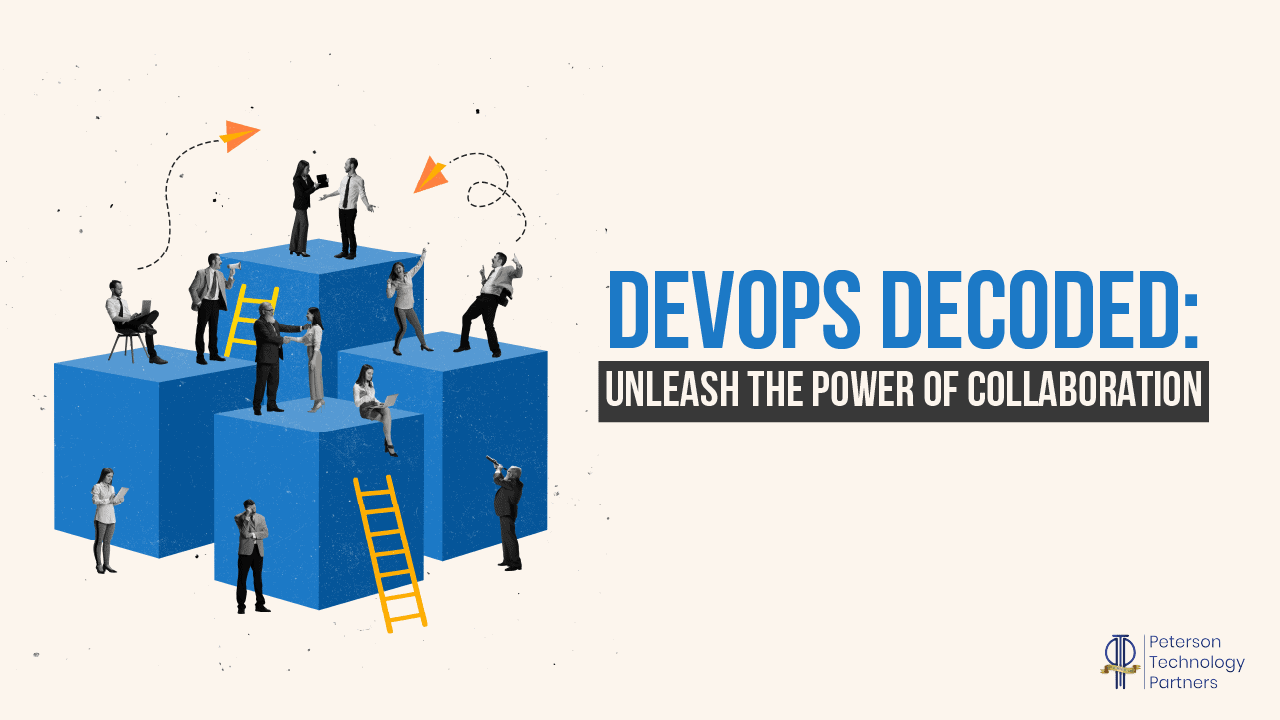There’s no end in sight: Just as your newest application finally launches, your first piece of feedback comes in! …It’s a bug report. Before you can even read it, you’re pinged by several of your developers who want to know why their access requests keep getting denied by IT. (Doesn’t ops know that’s delaying future releases?) And before you can form a response to that, IT operations staff chime in with their perspective — all those access requests are a real hassle for us, can you make the devs knock it off?
Breathe. You don’t need a professional negotiator; you need DevOps.
DevOps, a portmanteau of “development” and “operations,” is a practice intended to integrate traditionally disparate software engineering and IT operations teams. DevOps aims to foster better collaboration, faster development cycles, and a stronger overall product as a result. Ready to go from DevOps novice to master? Read on to discover our top three tips for creating strong, collaborative partnerships using DevOps.
Winning teams use a playbook
If we told you that in 2007, the New York Giants managed their famous Super Bowl victory over the New England Patriots, all without writing down a single play, studying any diagrams, or taking any notes… you wouldn’t believe us, and you’d be right! Even though shipping your newest product isn’t quite going to net you a shiny championship ring, don’t lead with any less commitment than the pros. Process documentation is something that falls by the wayside easily, and letting it slide gets even easier the more successful your organization becomes, but skipping it only hurts your company’s future.
If you do not yet have one, create a playbook (or other unified sets of procedural documentation) pronto – and be sure you’ve got a process in place to update it! Marko Anastasov, the co-founder of Semaphore, a service designed to further streamline continuous integration and delivery, explains: “The playbook is essential because it levels the ground for everyone and creates a unified interface that eases collaboration. For the playbook to be practical, it must be constantly improved and updated as processes change.” Providing a detailed road map for collaboration also forestalls many objections, increasing buy-in among key team members.
Remember, the whole use case for DevOps is to unite software development teams and IT operations teams, and so to incentivize strong working partnerships between the two. It only makes sense to start the collaboration off with some goals, ground rules, and go-to operational principles for when everything runs into a snag or setback. (Which absolutely will happen at least once.) Don’t skimp on the goal setting and don’t be afraid to dream big. DevOps teams that set larger, meaningful goals not only tend to achieve those goals but in working towards key milestones, create even stronger and more effective partnerships throughout the organization.
[RELATED: Why Setting Career Goals Will Set You Up For Success.]
Rethink your tools and support materials
Assets that were designed and intended for legacy development processes aren’t often equal to the task of keeping up with the increased collaboration, continuous delivery, and project speed for which DevOps has become known. In a lot of cases, the teams you’re targeting to bring into this nascent working partnership will be using entirely different tools to manage work, track milestones, and most importantly, communicate important information and updates to others in the workstream. Hello, procedural bottlenecks!
How do you make sure everyone’s in sync and looped in – and that they’ll stay that way? You actually have a lot more control over this than you’d think; when purchasing new software licenses or reviewing tools for future implementation, look for applications that work well with each other, or otherwise integrate for easier collaboration.
This way, incoming teams can continue working in an environment that they already understand, without having to upend their entire existing process and figure out how best to run it in an entirely new system. While this might not seem like the most urgent of issues, teams that work with tools that don’t integrate very well (or at all) have been proven to be at a real disadvantage in terms of communication: DevOps teams operate at their best when they use software solutions ready to integrate with work tools used by other groups.
[RELATED: The Power of Collaborative Relationships.]
It’s really about ownership, agency, and workplace culture – not “DevOps”
One of the biggest pitfalls leaders face in establishing a DevOps practice is the very practice itself.
Overfocusing on matters like, “doing DevOps,” or its worse variant, “doing DevOps correctly,” can paradoxically make achieving the goals you and your teams set for the partnership next to impossible. If you’re constantly operating with a mindset of, “What’s the most ‘DevOps’ action to take in any given situation?”, you’re missing the point of the practice, and while you still might see a small amount of business success that way, you will not and can not unlock the true power of DevOps unless a change is made.
How will the work change when you’re focused on what really matters? One famous example comes from a well-known source – Netflix. It’s almost impossible to discuss DevOps without hearing the name “Netflix,” and for good reason; the streaming juggernaut has created a wonderfully productive culture centered around the principles of DevOps – without once ever falling into the productivity trap of “performing DevOps.”
Instead of sweating the small stuff, Netflix leadership intentionally created a workplace culture that instills a sense of agency and ownership among tech teams: Engineers are encouraged to discover their own balance of freedom and responsibility, new code is very easily pushed to production, and the pursuit of perfection has been relegated back to the drawing boards and theoretical examples where it belongs.
At Netflix, as in so many highly successful organizations, it’s all about the people. “I believe many organizations fail at the Netflix approach because they simply don’t have the engineering muscle that Netflix does. Even though they may want to deliver faster and more efficiently and are even OK with taking on a little more risk, they can’t. They need the team to make it happen,” says Adam Bertran, renowned DevOps consultant, and subject matter expert.
Conclusion
Software development, like all team sports, is fraught with potential for friction — but it doesn’t have to be!
Leveraging the DevOps methodology helps unify your tech teams by codifying practices into playbooks, choosing tools that support collaborations, and steering clear of “performing DevOps,” in favor of focusing on the work culture at hand.
Once you master DevOps, overall development time will contract, and you’ll get to stop putting out fires and start focusing on innovation again.





